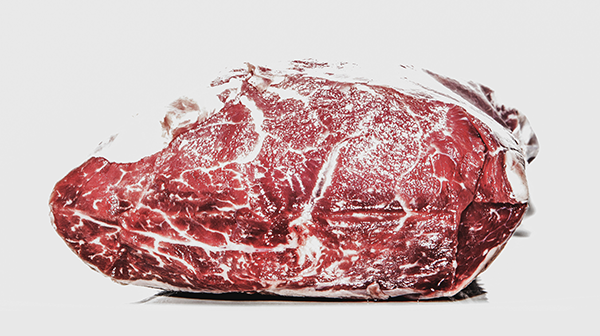Here at AGA, both the Professional Pet Stylists and the Advanced Professional Pet Stylists must complete a class called “Dog Food and Nutrition”. This class is designed to teach our students what healthy dogs need to survive and thrive. It also teaches students about the dog food industry, what the AAFCO describes as “Complete and Balanced” and how dog food labels are created. Many of the questions I get during lecture have to do with what the students are feeding their pets, and the most common of question is about raw food.
So…. what’s the scoop on raw food?
No matter who you ask, people have an opinion of raw food–whether they have fed raw or not. Some people are on the fence, some are advocates, and others just don’t like the idea. So here are some facts about raw and semi-raw so you can make a better-informed decision to join (or not join) the raw food movement!
Raw Food
Raw food can come freeze-dried, frozen, and unfrozen. Freeze dried food is “dry” by all accounts and packages easily. It also does not need to be refrigerated. Frozen must be kept below 32 degrees and must be left to thaw for your pet’s consumption. Unfrozen must be refrigerated and can be consumed without thawing.
A Word of Caution
Raw food has a higher risk of Salmonella and Listeria. If you choose to feed raw pet food to your pet, be aware that you can infect yourself with Salmonella or Listeria monocytogenes by spreading the bacteria from the contaminated food to your mouth. For instance, you may accidentally ingest the bacteria if you touch your mouth while preparing the raw food or after handling a contaminated utensil.
The FDA does NOT recommend feeding raw. Although there are a lot of dogs who do very well eating raw diet, the FDA does not recommend it because of the risk of food-borne illnesses that can infect humans. Also, it is unsafe to let a dog who consumes raw food lick you in the face or mouth. This is a matter of preference.
Ancestral Ties
Raw food gets you to do closer to his original wolf ancestors. While it is true that Canis Familuras, or the domesticated dog, is only a chromosome away from the wolf, the differences in feed has changed over the course of hundreds of years. So while many dogs can still eat a raw meal, like a rabbit or squirrel they have caught, our processed farmed meat may be hard to digest for some dogs.
Nutrition
Raw nutrition is better. Dogs are omnivores needing a balanced diet of fats, proteins, carbs, and minerals to live happy, healthy lives. Dogs who are strictly fed meat will be lacking in other nutritional deficiencies.
Other Benefits
One of the key benefits with feeding raw has been the stool size and average output. Many raw feeders say there is less defecation because the dogs are digesting and using more.
Many raw food pet owners also advocate that their pets coat, skin and teeth are healthier and shiner then when the pet was on cooked food, although there has been no study to date to prove this.
In Closing
Raw food can be handled safely as well as unsafely, just like any food. Feeding your pet raw food is a matter of preference, but do your research and talk to your vet! Do what’s comfortable for you and Fido and get all the facts before making the jump to the raw movement!


